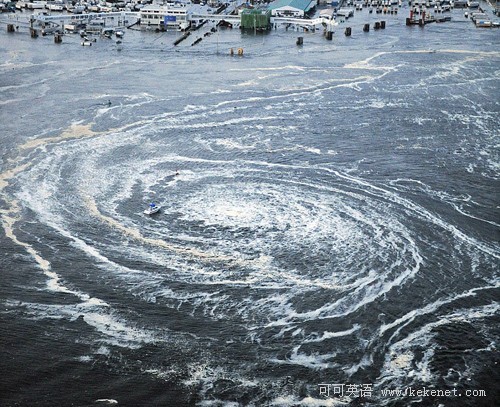
Mariners who escaped the onslaught of the tsunami soon had to contend with another peril - the appearance of vast whirlpools off the coast of Japan.
剛剛逃過滾滾而來的巨大海嘯浪濤的船員還來不及喘息,就又將面對另一處險象環(huán)生的挑戰(zhàn)——在日本近海岸線上出現(xiàn)的巨大漩渦。
The powerful vortices appeared yesterday morning when the oceans, swollen by the vast surge of water, began to recede.
在廣大淹水地區(qū)出現(xiàn)“退水”的情況下,出現(xiàn)威力強勁的大漩渦。
As the water levels fell, whirlpools hundreds of yards wide appeared, sucking everything into the themselves and creating new danger for passing boats.
隨著水位的下降,漩渦的范圍擴張到幾十碼的區(qū)域,它毫不留情滴將周圍的所有一切都吸入其內(nèi),這又給過往的船只造成了新的危險。
Whirlpools are created by rising and falling water - and are a common feature of tsunamis. But they are rarely as spectacular - or as well photographed.
漩渦是由于水漲水退的變化而引起的,是海嘯所常常伴隨的現(xiàn)象,但拍攝到如此大規(guī)模的海嘯,的確實屬少見。
Dr Simon Boxhall, of the National Oceanography Centre in Southampton, said: 'It's exactly the same thing that happens when you take a plug out of a bath or sink.
來自南安普敦國家海洋學中心的西蒙·博克斯霍爾教授說,“這樣情況就如同與你將蓄滿時的魚缸或水槽的塞子拔掉一樣。”











